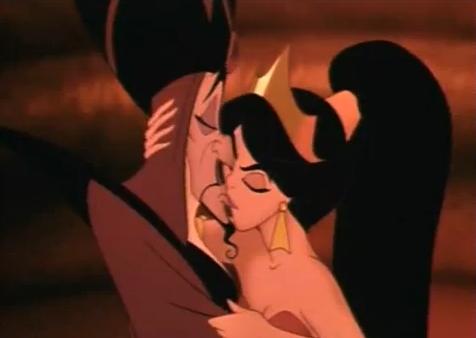When I found out we had to watch a movie for class, I was pretty excited, and that excitement didn’t decrease once I found out the movie was silent (believe it or not). I was really curious as to what it would be like since I’ve never seen a silent film before. Also, I have this really frustrating OCD habit where, if I don’t hear what a character is saying, I have to rewind that part over and over until I hear it correctly. But no verbal dialogue = no problem. So Nosferatu and I started out on good terms.
As I watched the film, I realized that the fact that the movie was silent was even better than I had originally thought – it was actually what made it bearable. In this day and age we all know what vampires are, and even some of their habits – they sleep in coffins during the day, use their fangs to bite victim’s necks, live in Transylvania, etc. However, the audience of this movie was definitely from a very different time, without this previously known image and all of its associations. The fact that the Count slept in a coffin was nothing new or even remotely interesting to 21st century me, while it would have captivated an audience in the 1920s and even scared them. To captivate a modern audience, or at least try, a vampire story has to add deeper, newer, and more shocking layers to the original concept (think Twilight if you haven’t already).

So I think the music and exaggerated facial gestures of this silent movie is what made it good for me- the presentation was something new, even though the plot wasn’t at all (and even though the scary vampire that was supposed to terrorize everybody he met walked slower than a zombie).
The best part about the silent film was the music! I loved the music narrating the entire movie. It was somehow so descriptive in the same way a written script would have been. It kept me emotionally attached to the goings on of the plot – when a certain piece would play, I would know whether the scene would be happy or “scary” and would set my mood accordingly for the next few minutes. Sometimes, in a moment where you would expect a character to laugh or cry (for example, Nina when she sees all the dead bodies being carried through the street), the instrumental in the song literally sounded like somebody laughing or crying. It was really well done. The facial expressions made by the characters had a similar effect; the acting was radically different from today’s times. Because there was no dialogue, every motion and expression had to be carried out to an unrealistic extreme in order to get the point across. This would be “bad” acting now since we have the technology to make films with sound, but back then it was a positive feature necessary to the viewer’s understanding and attention.
On a personal level, Nosferatu reminded me of a not so great memory from when I was much younger, which put a damper on an already depressing story. For years as a little kid I was never able to sleep. Sometimes it was because of nightmares and sometimes I was just scared for no reason. Regardless, I would wait up all night sometimes- hiding under my blankets, staring at the clock, and waiting for morning to come. I hated the nighttime, because for some reason the darkness alone brought along fear, while in the morning I felt much better and was able to sleep without any problem at all. So when the words “As the sun rose, Harker felt himself freed from the oppressions of the night” flashed onto the screen (after he spends a night at the Count’s home), this childhood habit is the first thing I thought of. Which was kind of sad. 
Overall, I think I like the idea of a silent film more than I like this movie itself. While Nosferatu did inspire me to try watching other movies in the same format, I wasn’t thrilled with the plot and the gloomy way it made me feel. It wasn’t a scary movie in the way we think of that term now- none of the imagery made me jump or scream, and I wasn’t in any sort of suspense as I watched it. But the smaller details, such as the image of rats pouring out of coffins, had this darkness to it that was on a much subtler and deeper level. There are different types of scary.
















 movie. I was immediatly hooked as soon as Knock aka “Doc Brown”, sends Hutter to Transylvania to visit a new client.
movie. I was immediatly hooked as soon as Knock aka “Doc Brown”, sends Hutter to Transylvania to visit a new client.








